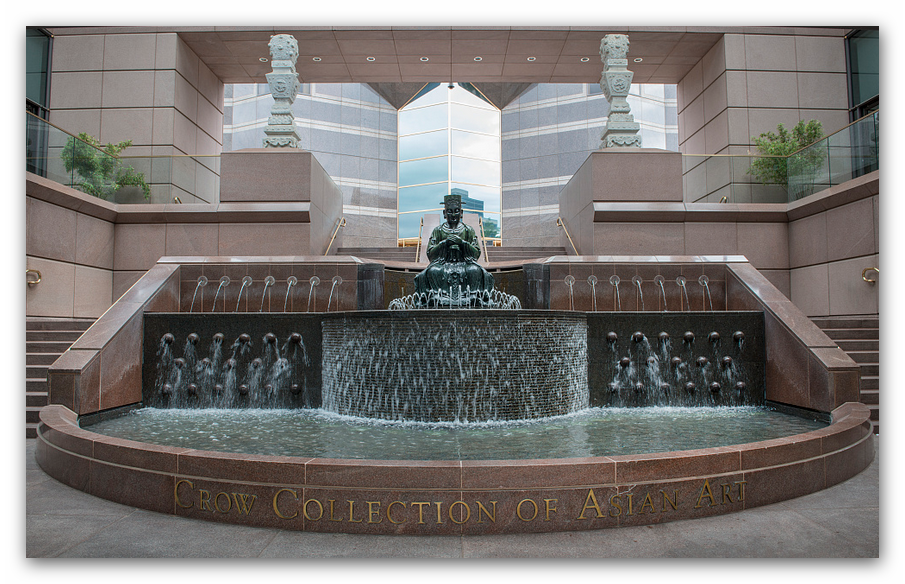Mar 14 2015 - Aug 14 2016
Dallas, TX
When is a vase not just a vase? In Asian art, a vase can be many things. In fifth century Korea’s Silla kingdom, a footed, tall neck stoneware jar was a component of an elaborate ritual offering ceremony (2010.56). In eighteenth century China, a large vase decorated with flowers and scrolling vines painted in blue cobalt on a ground of white porcelain was made for export and emblazoned with the armorial crest of a Portuguese family – an example of the global desire for and trade in Chinese ceramics.
Simultaneously, an eighteenth century cloisonné vase created in the Imperial workshops of the Qianlong emperor shows the fusion of ancient shapes that date back to China’s Neolithic cultures with technically advanced techniques to produce brightly colored enamels. In late nineteenth century Japan, an inlaid iron vase could be part of a thoughtfully composed tokonoma display in a private home, or seen as a tour de force of fine decorative metalwork by former armorers (1995.2).
This exhibition examines works of art from the Museum’s permanent collection that present artistic imagery and auspicious symbolism as design elements embedded within sculptural objects with a functional purpose. These vases, chests, and objects d’art are imbued with symbols and beliefs of the cultures in which they were created. The artistic mastery with which they were crafted in lacquer, cloisonné, ceramics, and metal elevates these objects to a level of fine art, at once excessively superfluous and profoundly symbolic of enduring cultural values in East Asia.
Credit: Exhibition overview from museum website.
Exhibition Venues & Dates
Mar 14 2015 - Aug 14 2016
Dallas, TX
